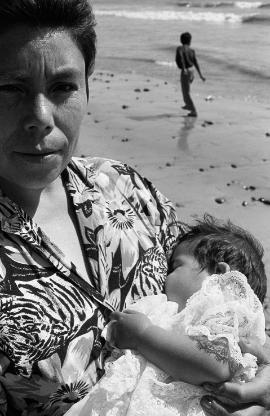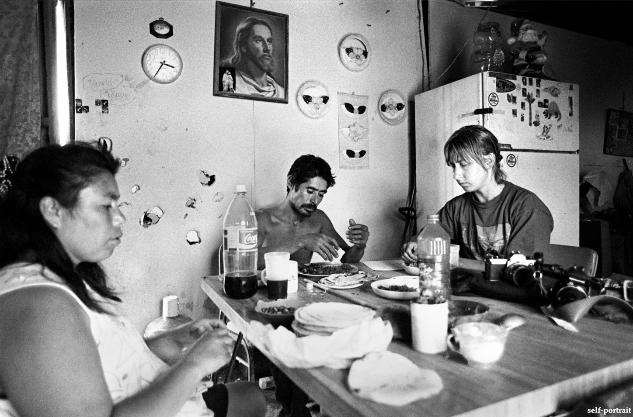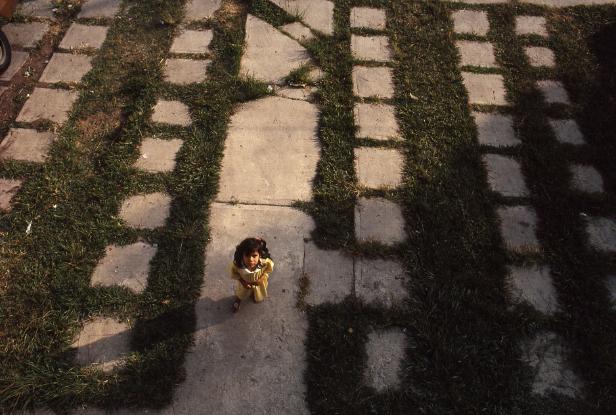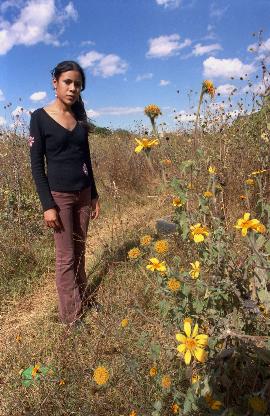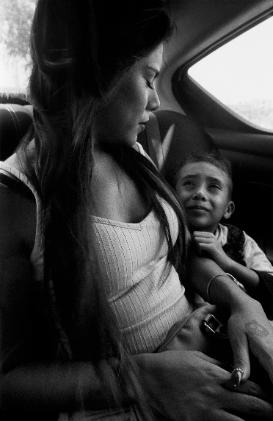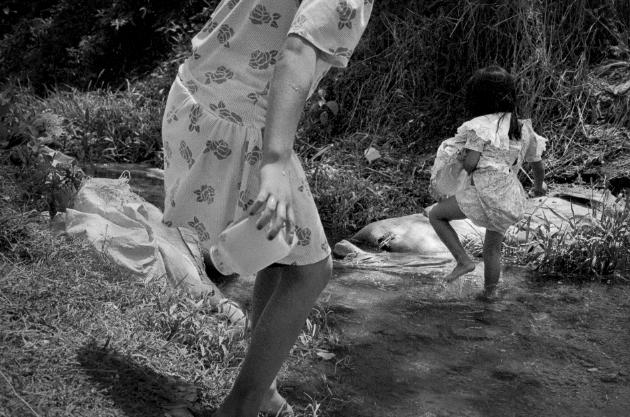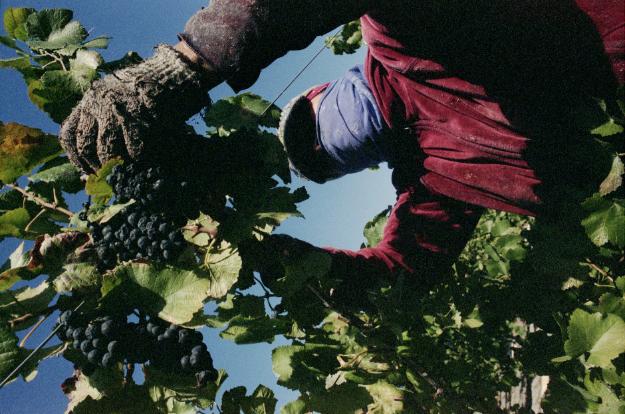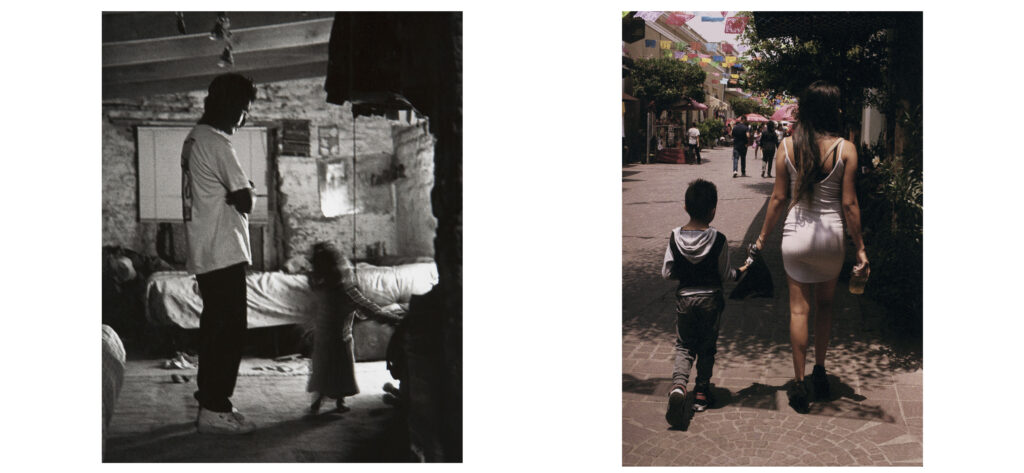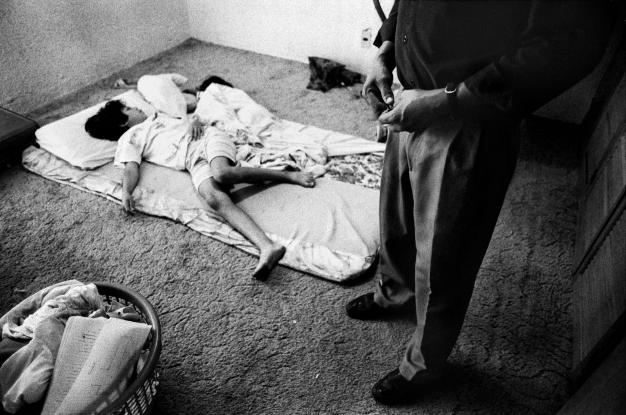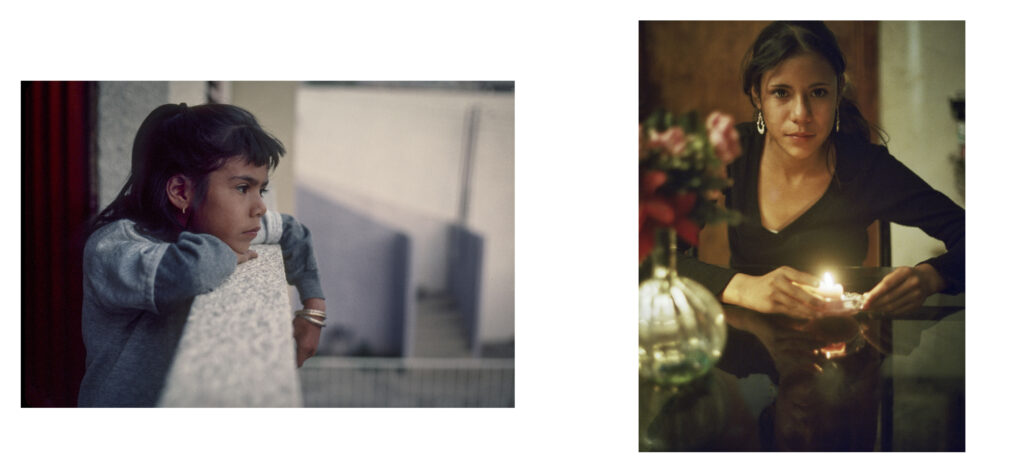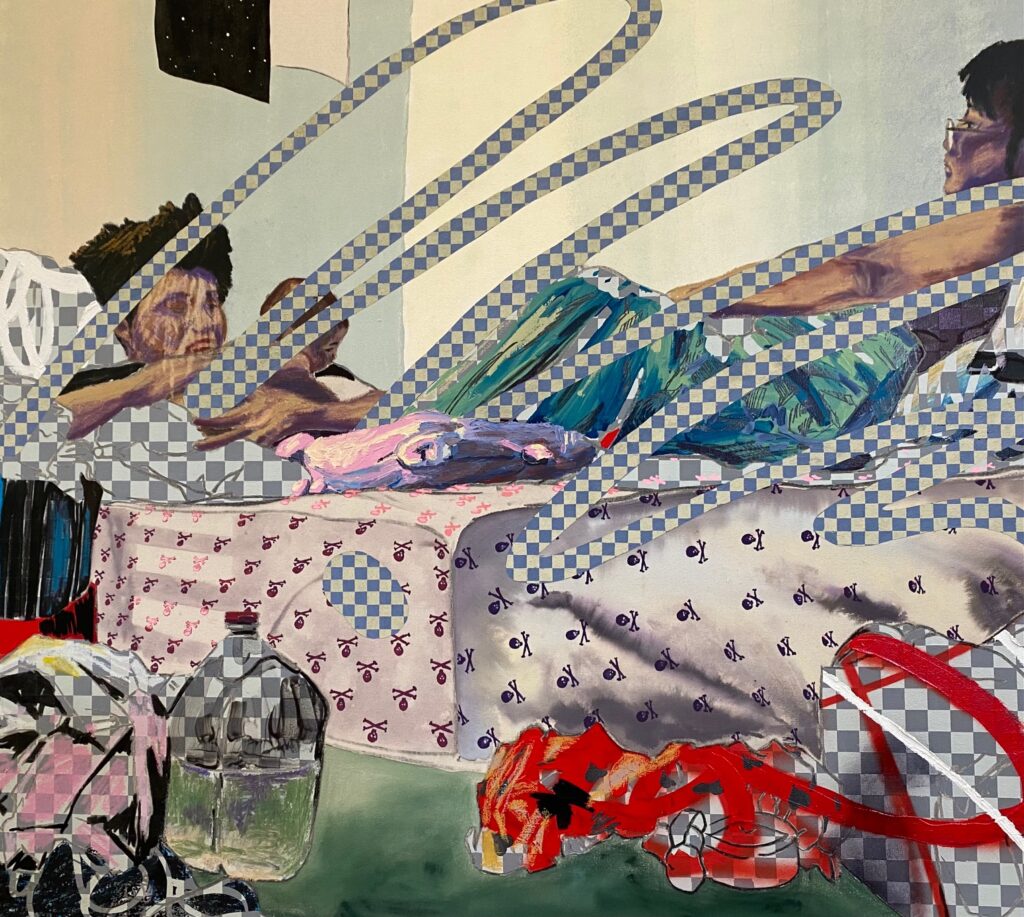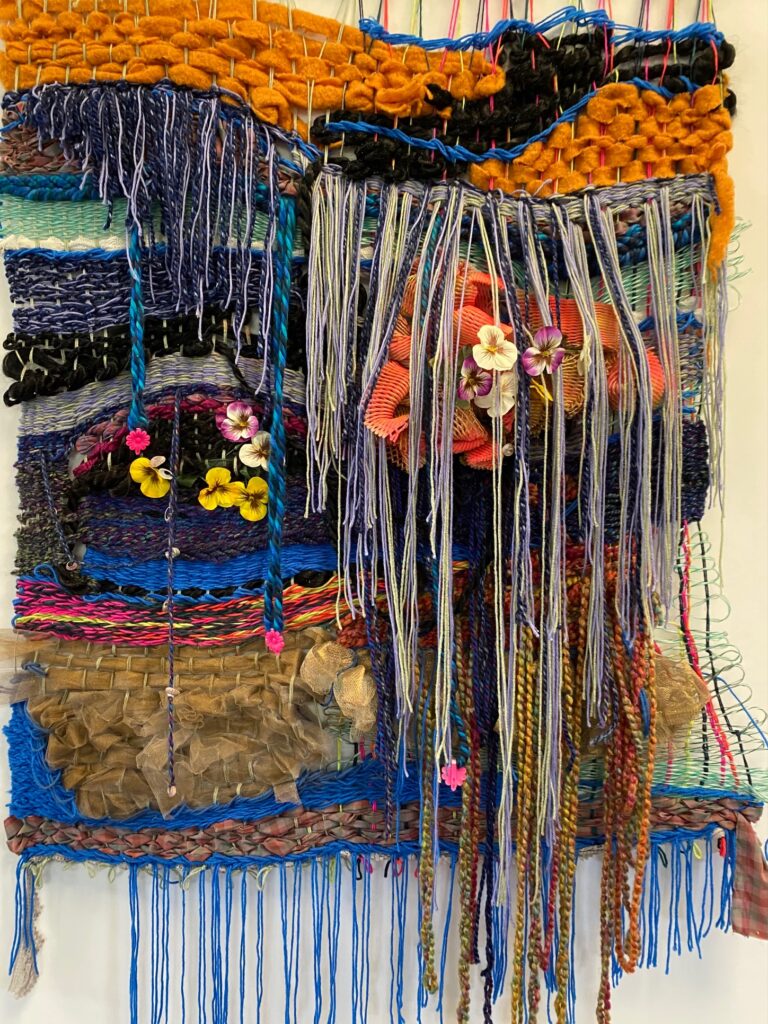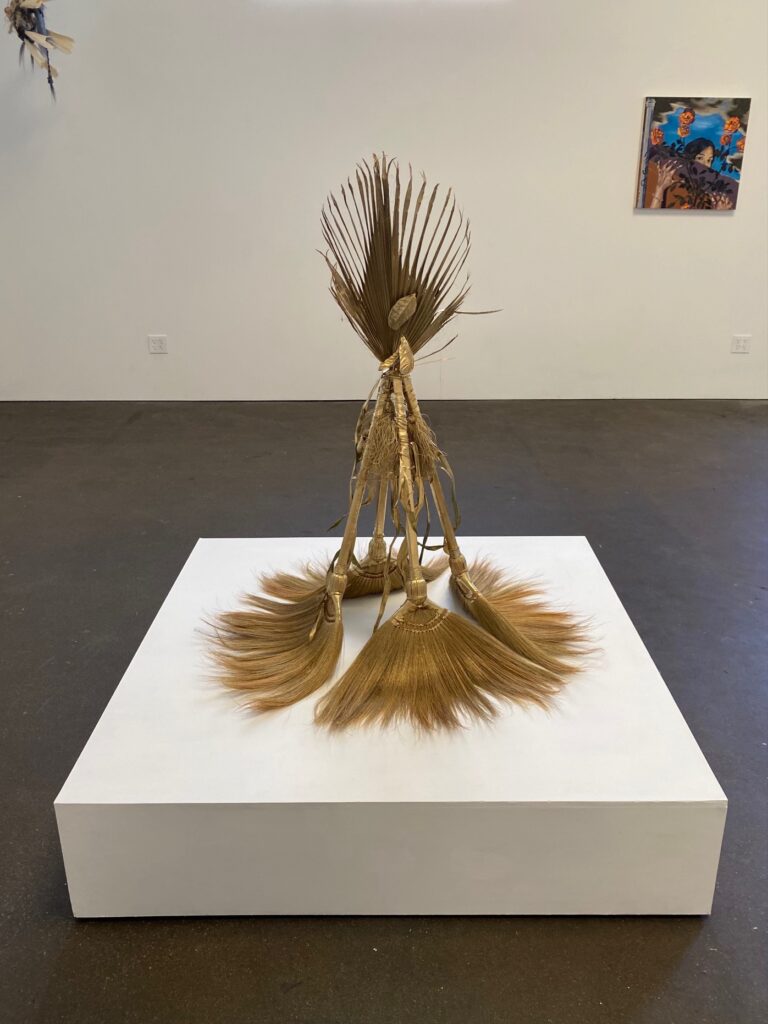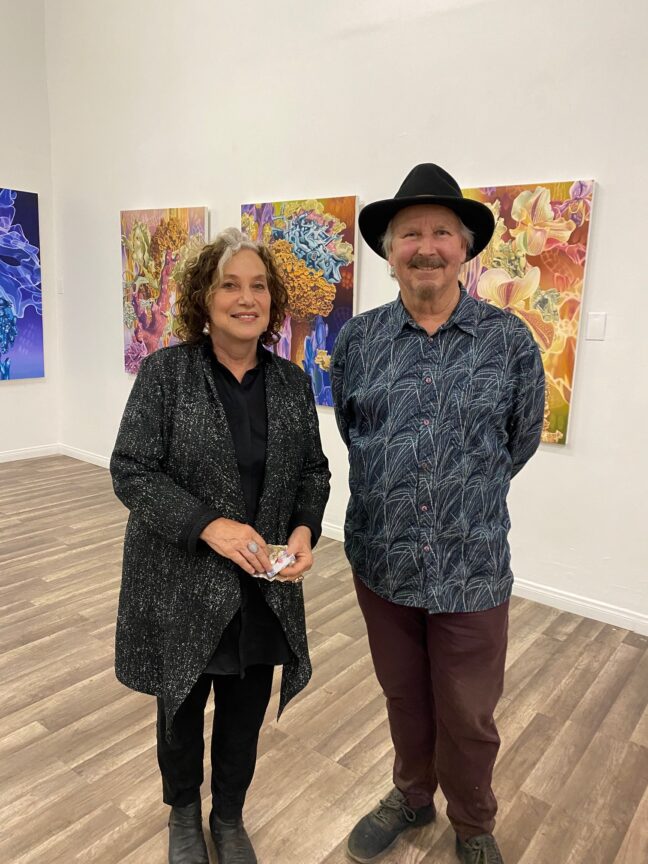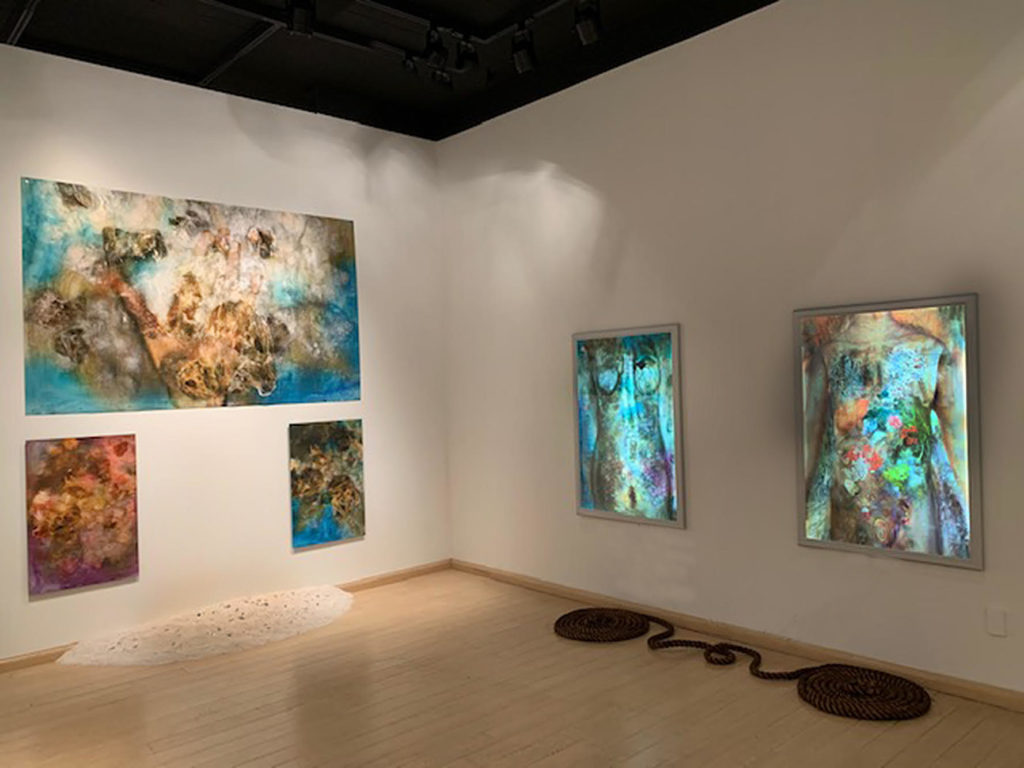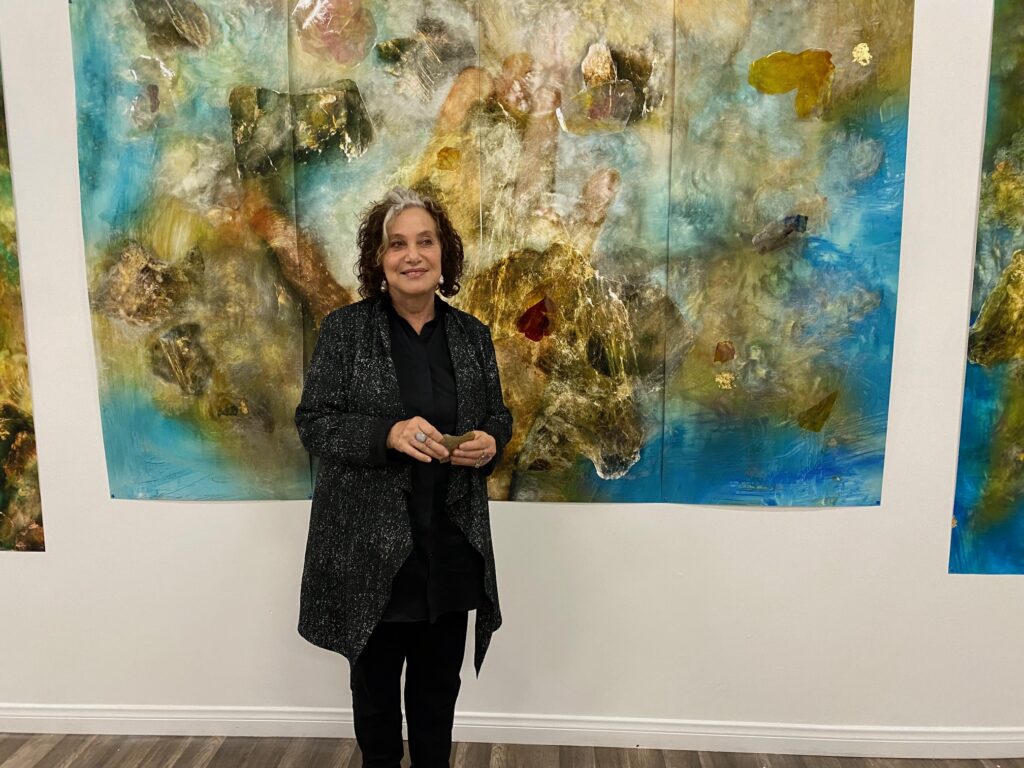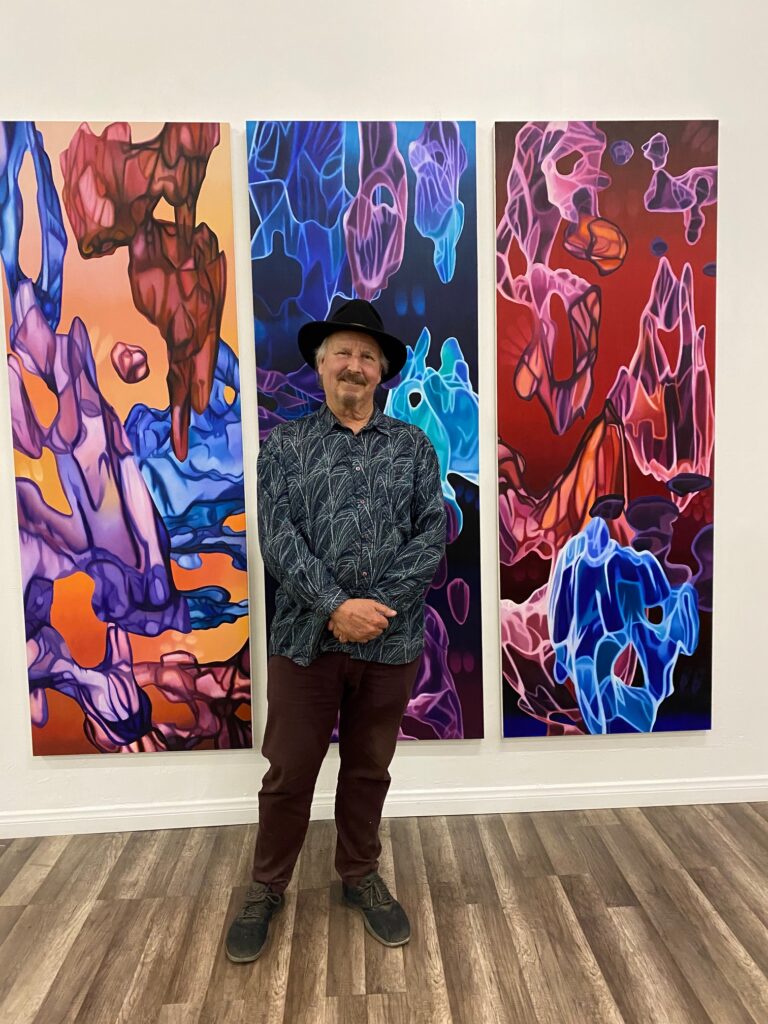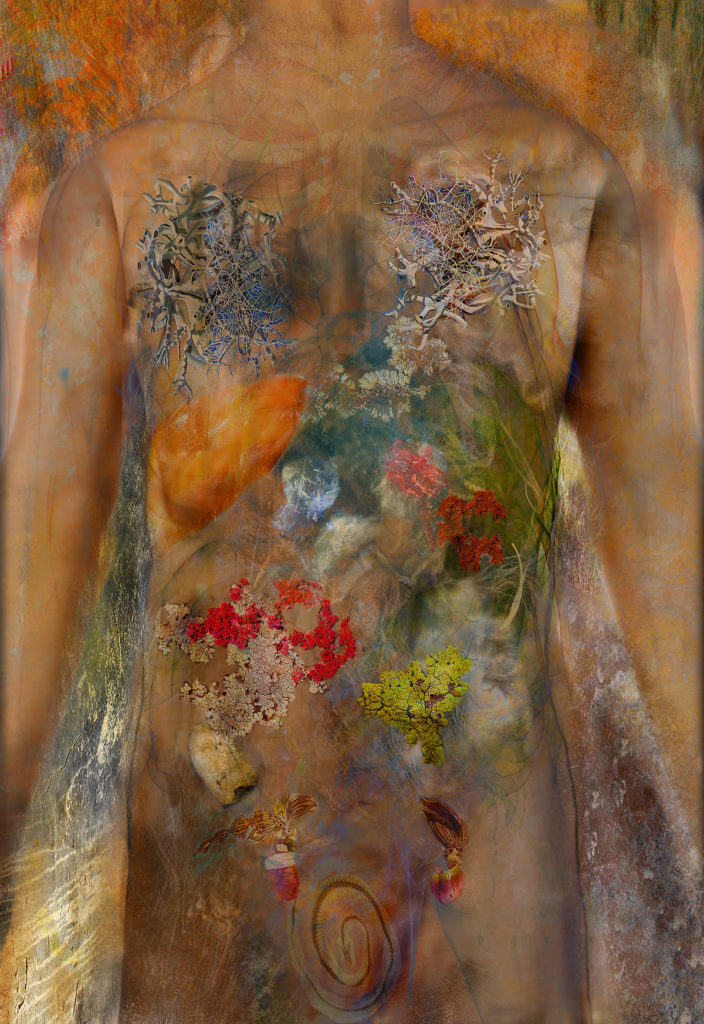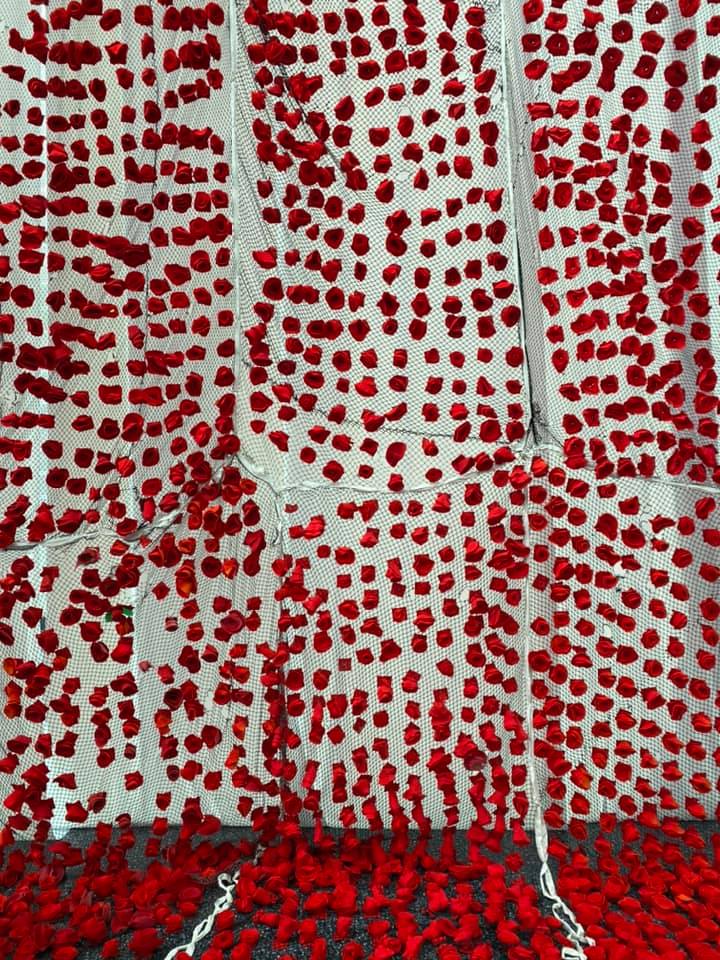
With wider aisles, more compact, and with fewer opening night noshes, the LA Art Show has nevertheless jubilantly returned, with a compelling and lively mix of the cutting edge and the commercial. This year, the show is under the fine new direction of Kassandra Voyagis and returning curator Marisa Caichiolo.
Wearing sequined masks and in some cases, performative respirators, art lovers flocked to the first night gala; at the entrance, following a signage reminder to mask up, a lovely, somber tribute of red roses in a flowing art work that represented lives lost to COVID-19.

Several artists new to me presented exciting work that bodes extremely well for a diverse, robust, and multi-media art scene; and some personal favorites, both artists and galleries, revealed bold new work. Welcome back, LA Art Show. It’s been a long 18 months, and we might’ve been wearing our required masks to hug, but it was great to embrace art, both literally and figuratively.
Here are some highlights:
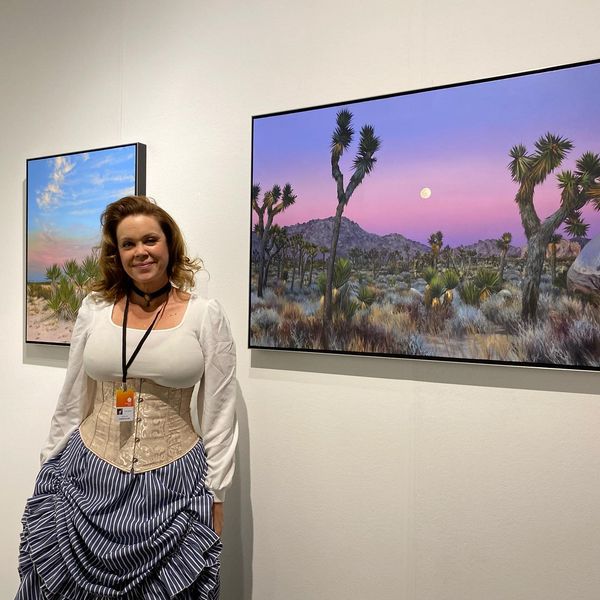
Santa Barbara-based Naomi Brown’s vivid, lush, hyper-realistic Joshua Tree desert landscapes were dazzling, a fresh look at a well-loved SoCal region as expansive as the land itself. Watch for an upcoming exhibit from the artist via Slopoke Gallery in the Solvang area this fall.

Closer to home, Redondo Beach artist Susan Soffer Cohn led attendees through a small curtained passage to view illuminated patterned abstracts, created with ink on Duralar and LED lighting.

Stunning sculptural work by Ariel Vargassal and Scott Riddle played with light and shadow in a beautiful recessed exhibit space from Building Bridges Art Collective, “Bee-careful with our planet.”
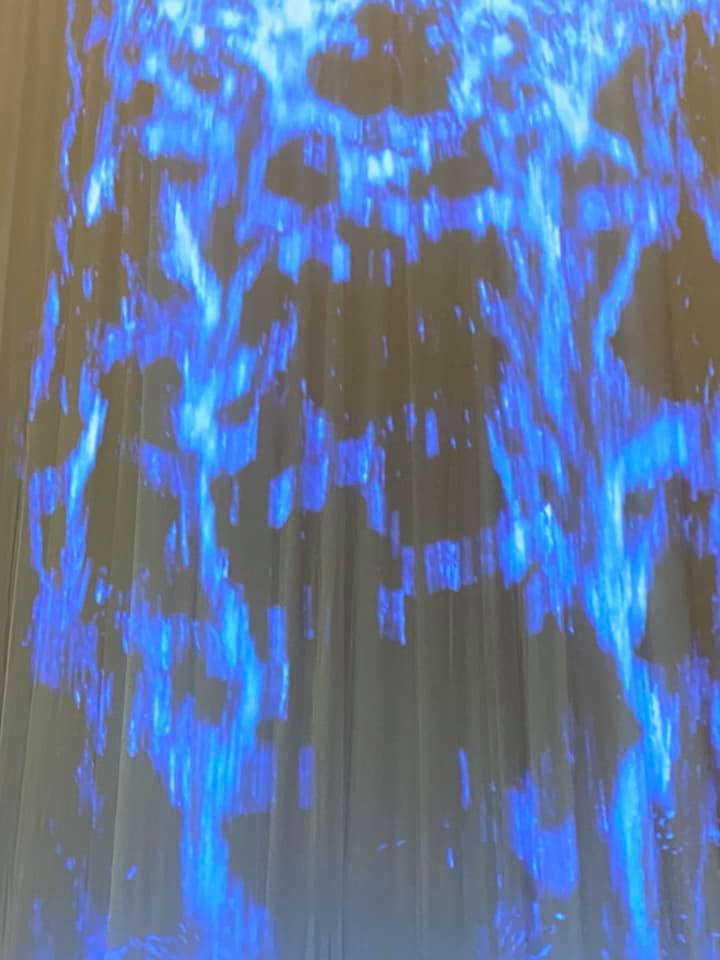
The always stunning video art of Luciana Abait spilled from a black curtain illuminating the intense blue waterfall of the artist’s “Agua,” a video projection first viewed at DTLA’s outdoor Luminex exhibition several months back.
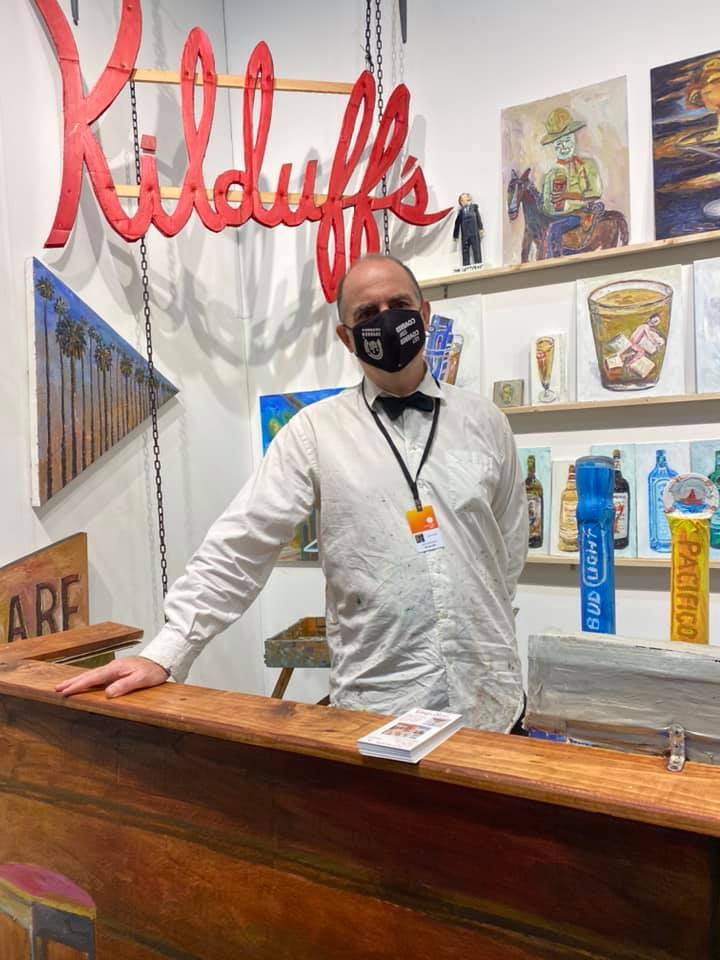
A fine installation by the ever-witty John Kilduff recreated a comfortable bar with painted stools, individual small painted “shots” for sale, colorful beer taps, and even a stained glass window at his art “tavern.”
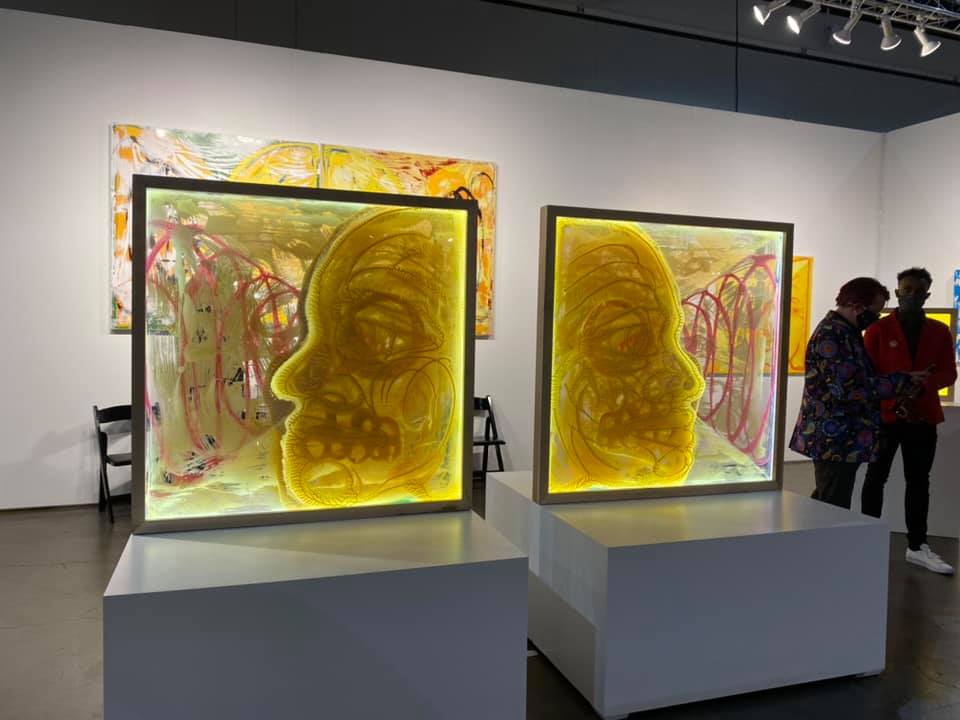
Coagula featured a variety of spaces and artists, among them the glowing golden profile of “Luminous Symmetries” from Nikolas Soren Goodich.
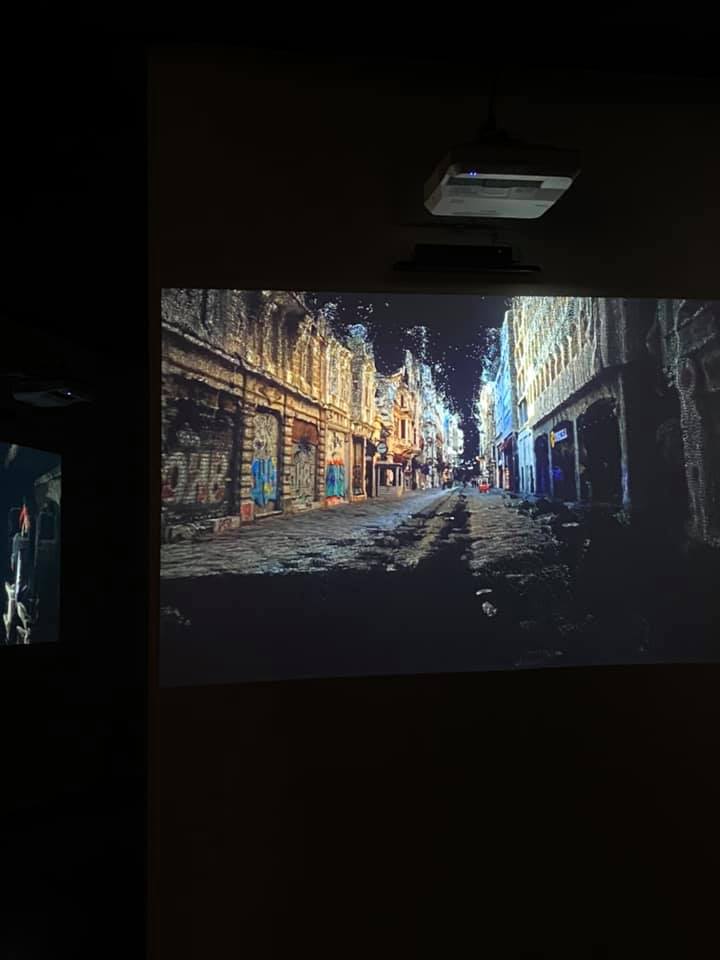
Exciting video installations from DiverseArtLA drew viewers into an alternative universe dancing with dots and light in a poetic, pandemic-inspired series of works from Zeynep Abes representing the Istanbul that was once the artist’s home.
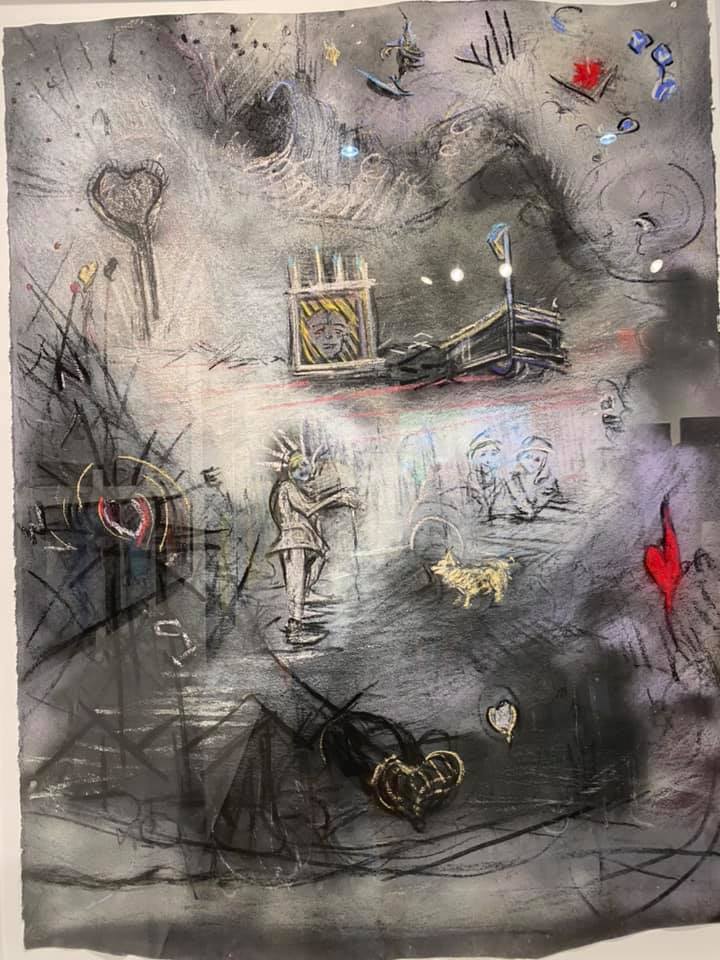
At Fabrik Gallery, standouts included gritty, smart mixed media work from Randi Matushevitz and at LAACP, dreamy gold and blue cyanotypes from photographic artist Cathy Immordino.

Lush black and white LA architectural landscapes from Maureen Van Leeuwen Haldeman cast their own evocative spell, also in the Fabrik booth.

bG Gallery presented small works by a variety of excellent Los Angeles artists, from the small scale, perfect worlds of Glenn Waggner’s circular paintings to the distanced beach-dream of Richard Chow’s photography. Barbara Kolo’s vibrating geometric abstracts, Gay Summer Rick’s lustrous westside landscapes, and Susan Lizotte’s gracious florals were also on view.
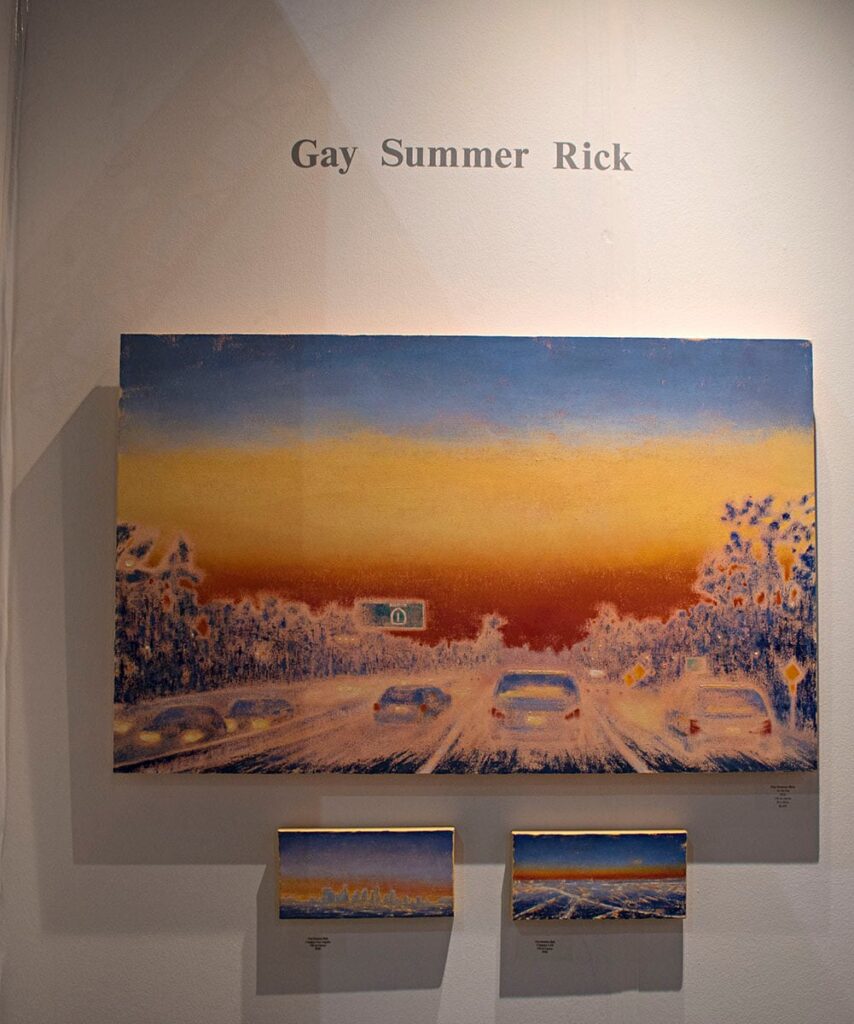
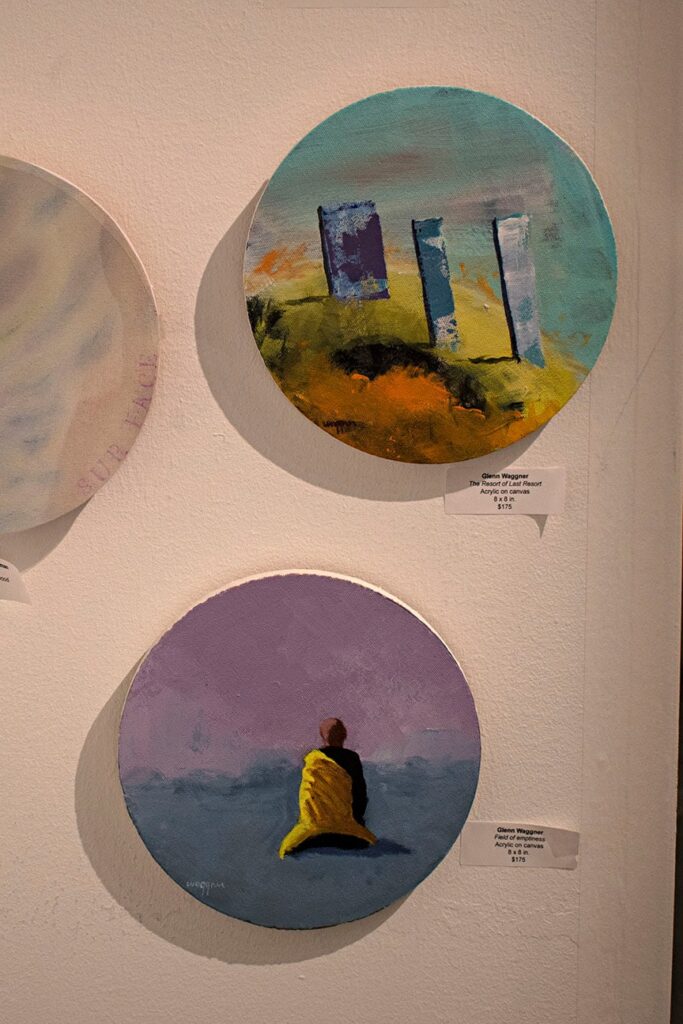
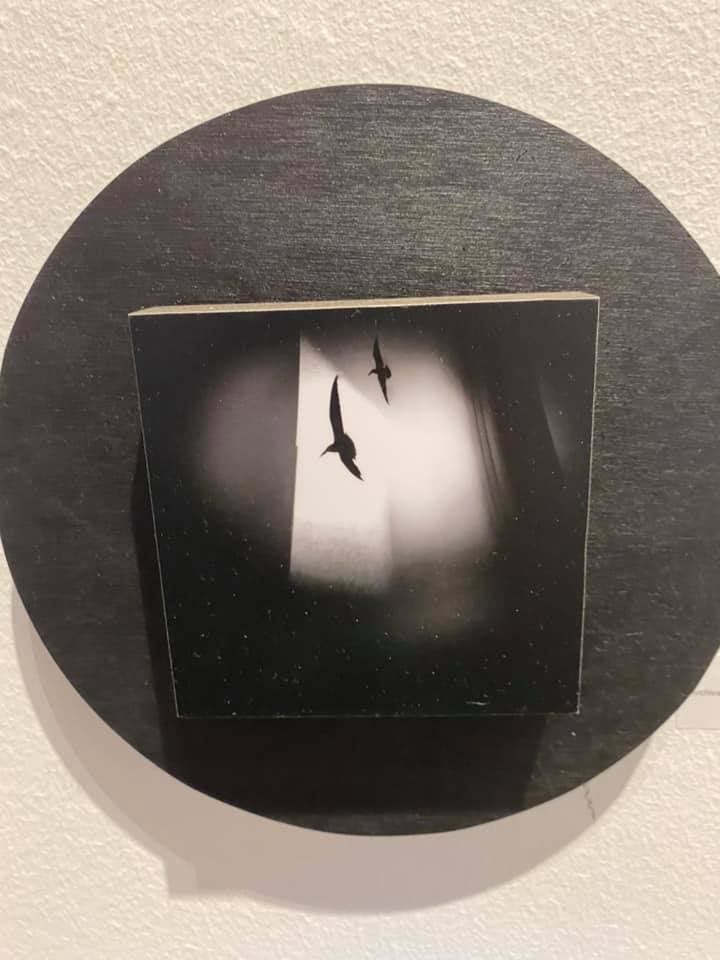
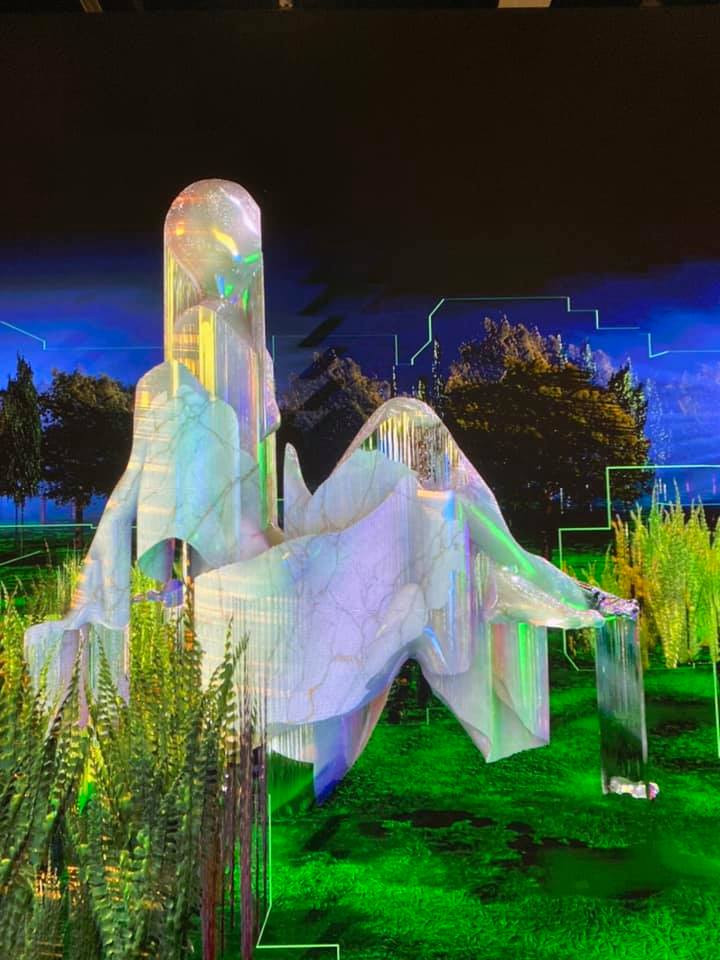
Other notable exhibitions included an illuminated dazzle from Anne Vieux, NFT from Vellum LA (below), and a live interactive work from Tiffany Trenda, Un/Seen.
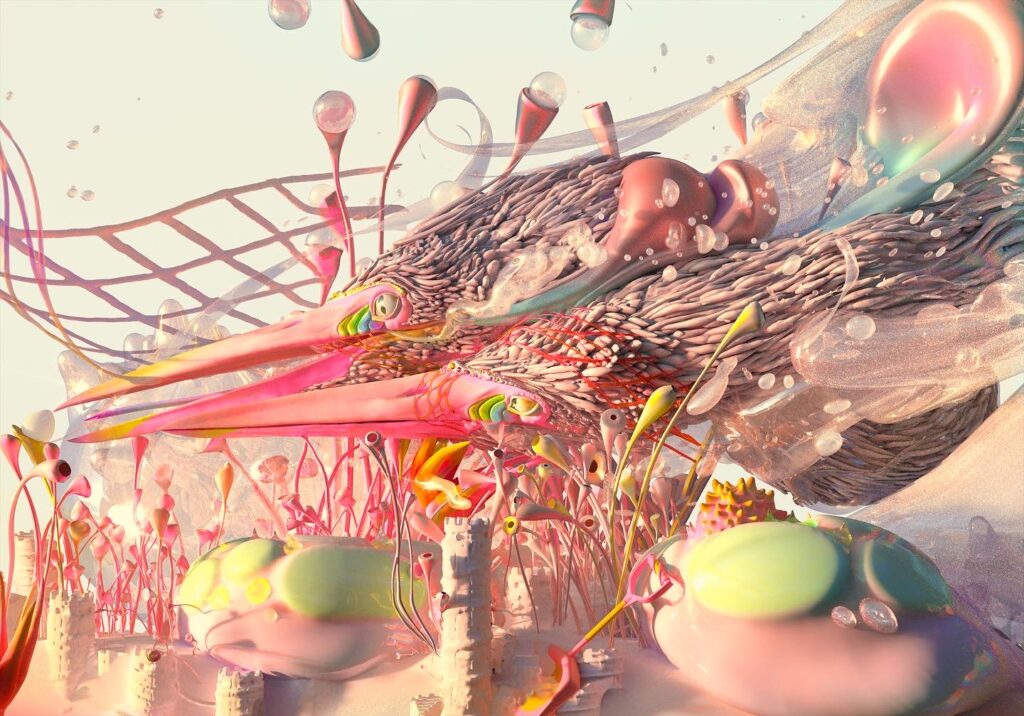

At MASH Gallery, above, layered, light-filled works by founder Haleh Mashian alternated with glowing color works from Angela Johal.
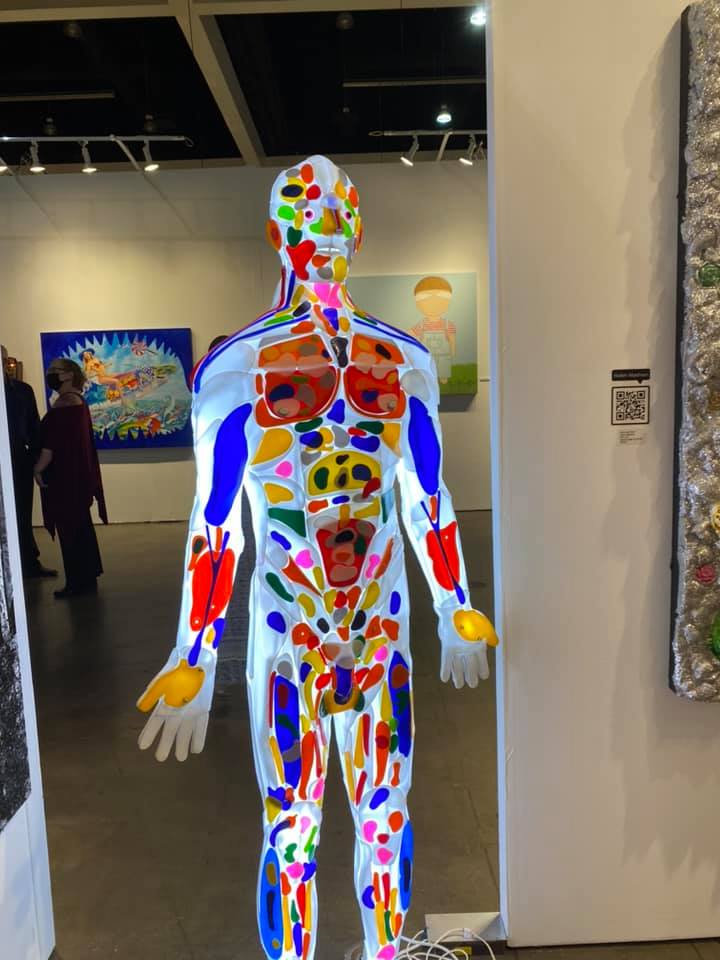
Spanish artists Javier Barco and Diego Beneitez exhibited otherworldly abstracts reminiscent of desert and sea.
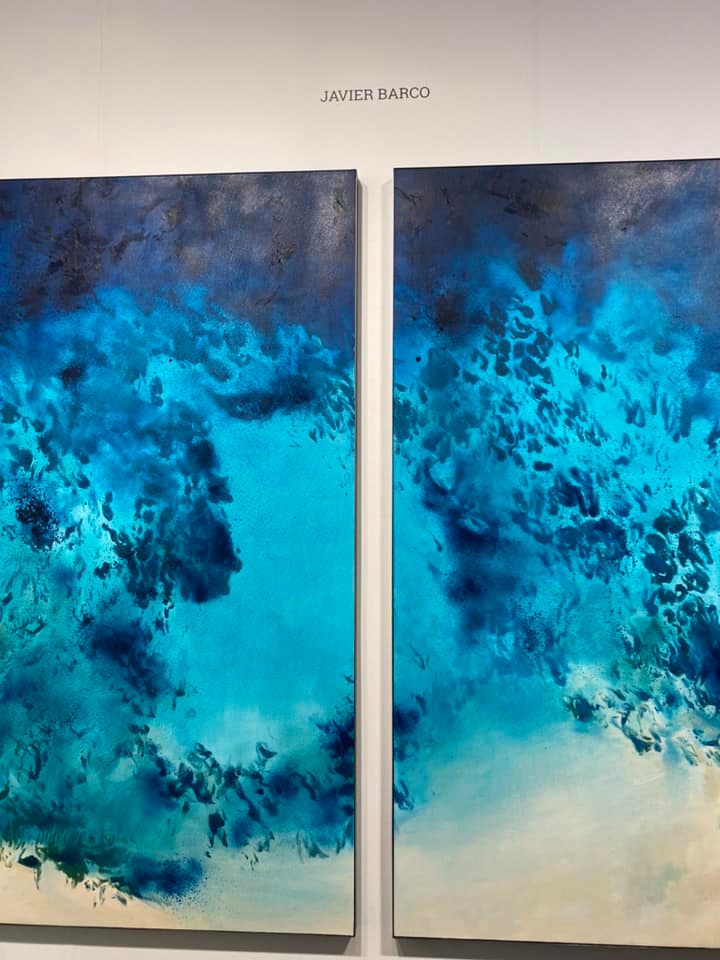
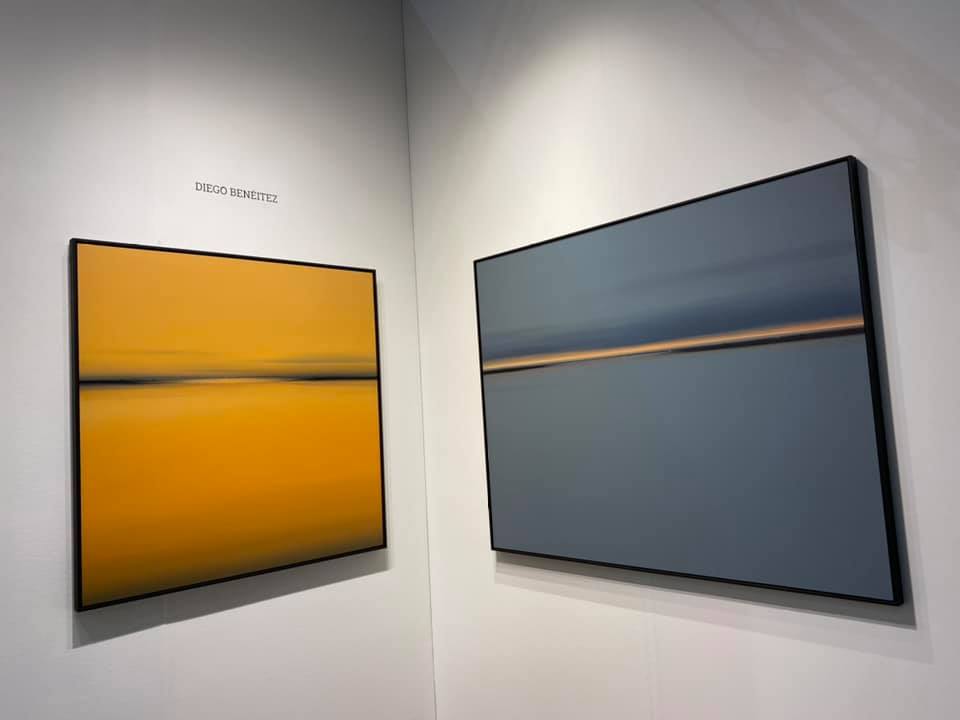
AiBo Gallery revealed some brilliant sculptural sparkle.
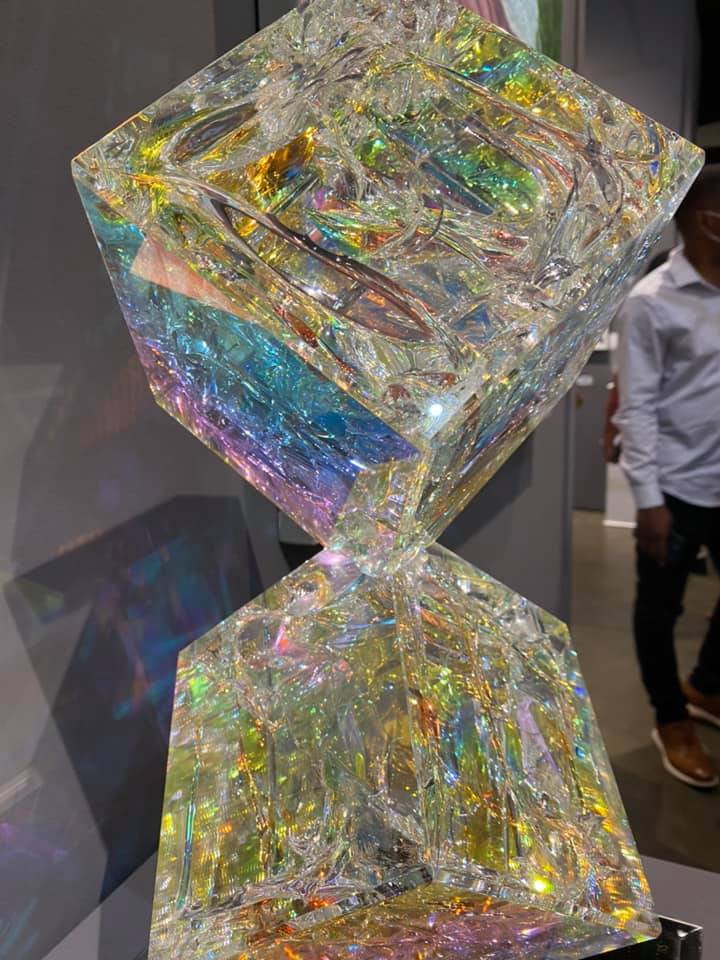
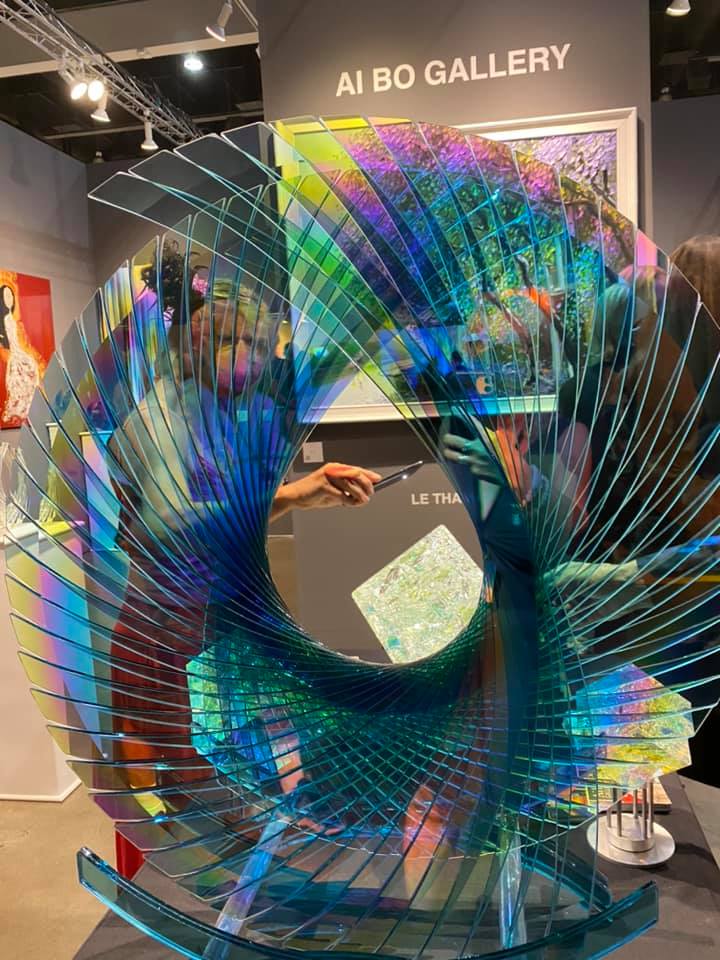
At Arcadia Art, Stephen Fox evoked Edward Hopper.
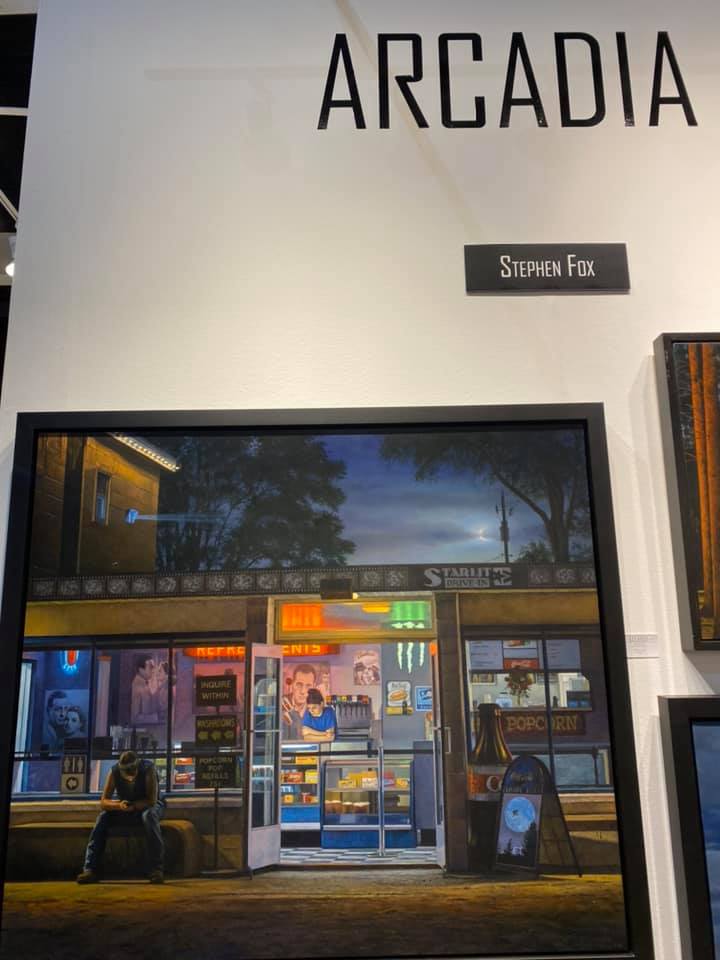
And throughout the exhibition, large-scale sculptural works dotted the convention hall floor.
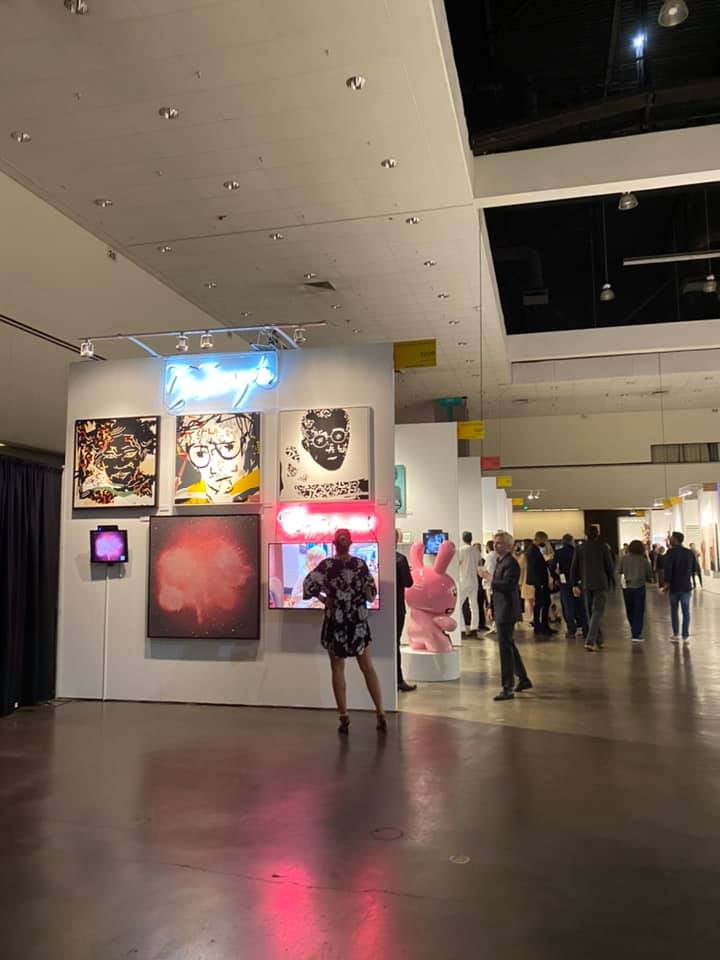
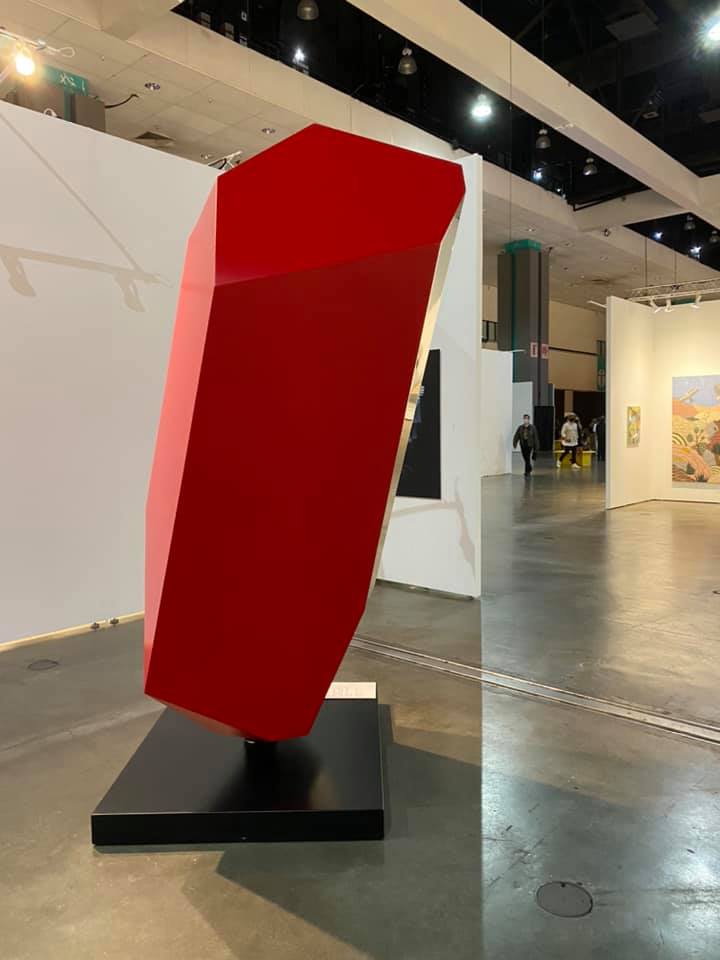
LA Art Show is at the Los Angeles Convention Center West Hall through Sunday. Join us in a hearty welcome back – it’s been a long 18 months.
- Story and photos – Genie Davis




